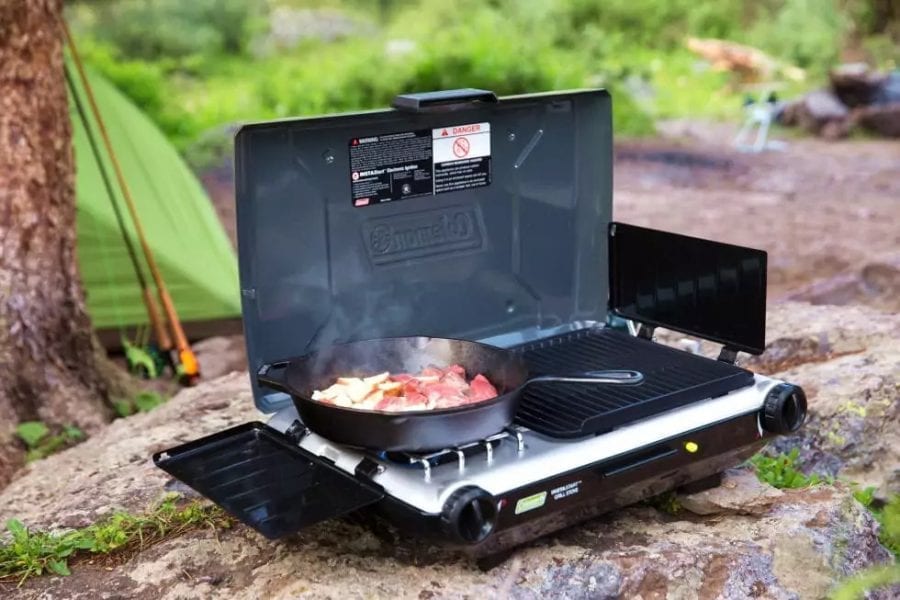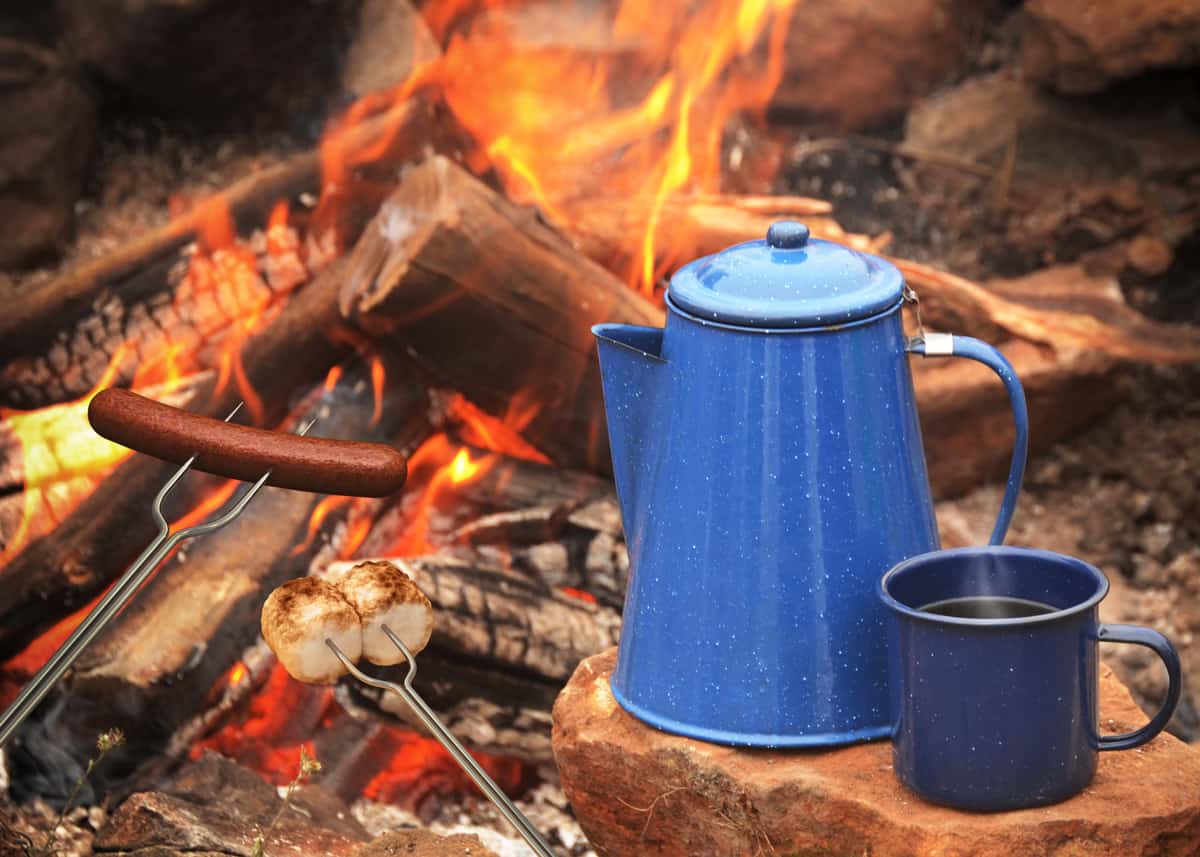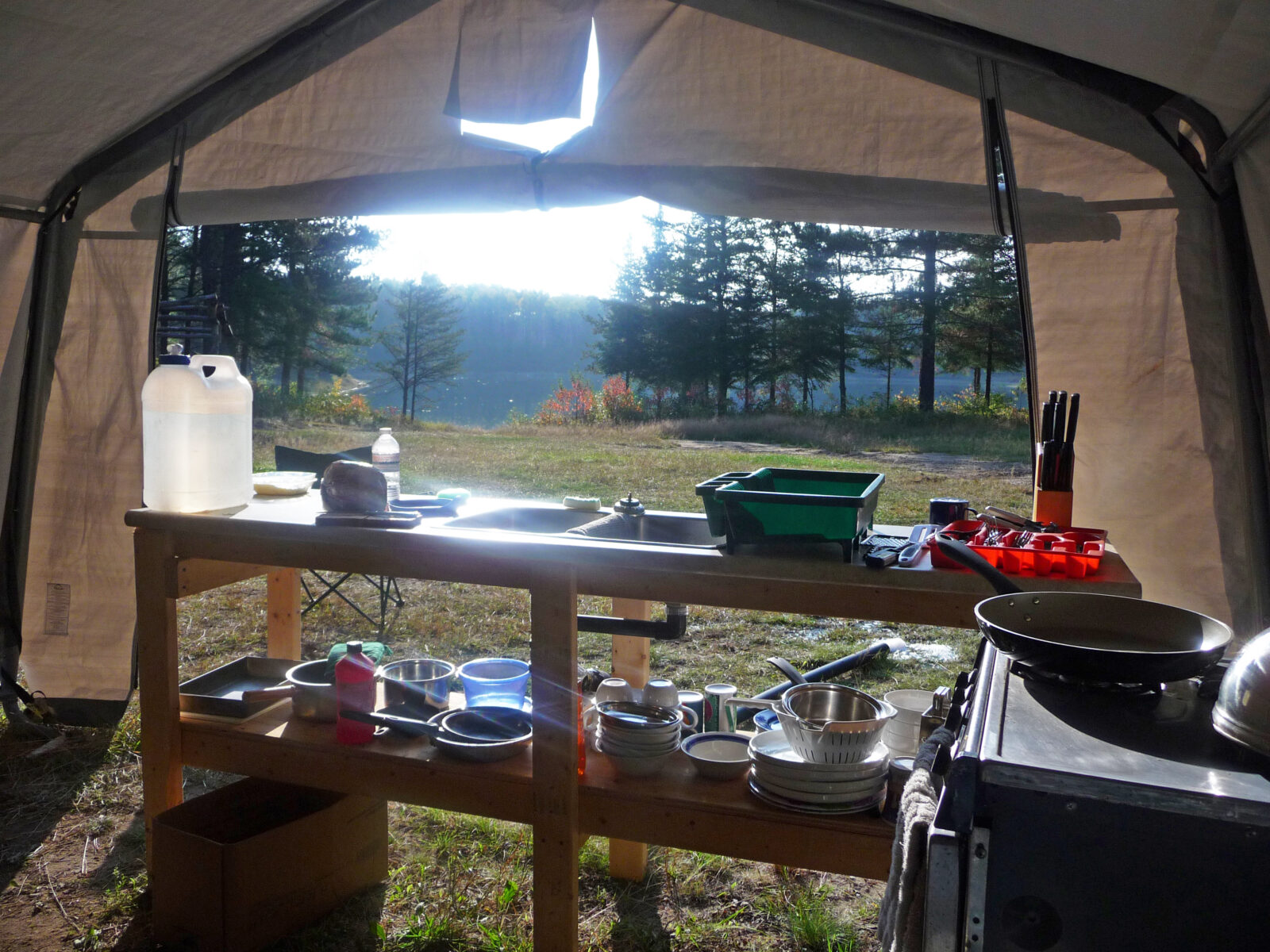A camping stove is a vital part of any outdoor gear list. But how much do you actually know about camping stove safety precautions?
While camping stoves might seem like simple pieces of gear, there’s a lot that goes into using one properly. Indeed, a solid understanding of stove safety is essential for any avid outdoor adventurer.
To ensure that you’re prepared to use a stove properly, we’ve created a list of 12 essential camping stove safety tips. That way, you can safely cook up some gourmet grub on your next trip into the mountains.
1. Never use a stove in your tent
First things first, never ever use your stove inside your tent. Whether you’re stuck in your 2 person tent during a blizzard in Glacier National Park or it’s raining during your trip to Olympic National Park, cooking in your tent is never a good idea.
Why?
Well, camp stoves naturally produce carbon monoxide. When you cook outside, this deadly gas is diluted by the surrounding air, so there’s usually no reason to be concerned. In an enclosed space like a 6 person tent, however, carbon monoxide can build up to dangerous levels leading to a potentially fatal condition known as carbon monoxide poisoning.
Long story short? Don’t cook in your tent. We know it’s tempting, but it’s better to be safe than sorry.
2. Ensure your stove is in good working condition
While camping stoves are designed to strict safety standards, broken parts, dirty fuel lines, and other similar issues can cause safety problems for campers. Therefore, it’s important that you keep your stove clean and in good working condition at all times.
For small canister stoves, this normally means ensuring that the stove is clear of dirt and grime before you start cooking. If you have a larger liquid fuel stove, you may have to regularly clean and grease the various stove parts to keep your gear in good condition.
When in doubt, consult the stove’s manufacturer for specific maintenance tips.
3. Set up your stove on a flat surface
We know that it can be difficult to find a flat surface in rocky backcountry campsites, such as what you might find in Shenandoah National Park. But setting up your stove on a flat surface is of the utmost importance when it comes to camping stove safety.
That’s because a stove set up on a slant could increase the likelihood that your stove will tip over while you cook. It could also increase the chances that you spill a pot of boiling water, which can lead to burns and other not-so-nice injuries.
So, whenever possible, place your stove on a flat surface. A camping table is ideal, but if you don’t have one, any flat surface on the ground will suffice.
4. Make sure you stove is properly attached to its fuel source
Regardless of whether you’re using fuel canisters or liquid fuel bottles, it’s imperative that your stove is properly attached to its fuel source.
Improperly attached fuel lines can lead to fuel leaks while you cook. Depending on how much fuel leaks out of your stove, this could cause a fire or a small explosion – not ideal.
That’s why it’s important to check that you’ve properly attached your stove to your fuel source before you start cooking, every time.
5. Don’t leave your stove unattended
As a kid, you were likely taught not to leave your stove unattended while cooking at home. The same rules apply when you’re outside.
Just like at home, an unattended camp stove can cause a fire. While that small flame coming from your stove might not seem like much, camp stoves have caused major wildfires in the past.
Therefore, if you need to step away from your stove for any reason, be sure that there’s a responsible adult that can keep an eye on it. If not, it’s best to turn off the stove completely and then relight it when you return.
6. Be cautious when lighting your stove
When it comes time to light your stove, caution is of the essence. Regardless of whether you’re using a lighter to start your stove or whether it has a built-in auto-igniter, there are a few best practices for stove lighting that you ought to keep in mind.
In particular, it’s important to keep your hands and face (as well as any flammable objects) away from your stove as you light it. This might seem obvious, but we campers do have a bad habit of getting too close to our stoves as we light them.
Keeping your distance from your stove as you light it can protect you from burns and other injuries in the process.
7. Avoid using stoves on flammable surfaces
We’ve already mentioned the value of setting up your stove on a flat surface. But, we should also highlight the importance of avoiding stove use on flammable surfaces.
In general, it’s best to avoid using a stove on flammable materials, like grass, dead leaves, and twigs. Since these materials can catch on fire when exposed to extreme heat, you generally want to avoid cooking on them.
If you have no other choice but to cook on the grass, be particularly cautious. Keep an eye out for burning grass and have water on hand so that you can put out any sparks before they turn into a fire.
8. Use only purpose-built windscreens
Some stoves come with windscreens to help improve their performance in windy conditions. However, it’s critical that you only use purpose-built windscreens on your stove as other makeshift models could spell trouble.
It’s especially important to avoid the use of makeshift windscreens around canister stoves. Placing windscreens around canister stoves (which are highly pressurized) could increase the temperature of the canister. This could lead to a major explosion, which is something you’d probably like to avoid.
Thus, don’t use a windscreen unless your stove’s manufacturer specifically says that it’s okay.
Read More : How to Camp Safely in High Winds
9. Keep fuel bottles and canisters away from campfires
As you can imagine, camping stove fuel is highly flammable. Therefore, you’ll need to be particularly careful with your stove fuel when you’re not actively cooking.
In particular, take care not to place your fuel bottles and canisters near a campfire. If the fire were to spread, this could lead to the start of a massive wildfire.
Additionally, pressurized fuel canisters can explode when exposed to high heat, so always keep your fuel cans far from your fire pit.
10. Take care when packing fuel in your backpack
In addition to being flammable, camping stove fuel is also highly toxic. As a result, you’ll want to be cautious when packing stove fuel into your backpack while camping.
The chief concern here is a fuel spill that contaminates your camping meals and hiking snacks. Of course, if you’re close to a town where you can pick up extra food, such a fuel spill is more of an inconvenience than an emergency. But spilled fuel in the backcountry that ruins your food supply is a serious situation.
Therefore, it’s important that you always take care when packing fuel into your backpack. In particular, be sure to place your fuel below your food in your pack so that any spills don’t contaminate your food.
11. Wait for your stove to cool down before packing it away
After you finish cooking your meal, you may be tempted to shut off your stove and pack it away for the night. While doing so is very convenient, you’ll actually want to wait a few minutes for your stove to cool down before you pack it away in your hiking backpack.
That’s because hot stoves are a burn hazard for you and your fellow campers. Additionally, trying to disconnect a fuel bottle from a very hot stove can cause small explosions if there’s still gas leaking from the canister.
Essentially, patience is key when outside. Waiting a few minutes for your stove to cool off after you finish cooking can make all the difference when it comes to your safety in the mountains.
12. Follow the manufacturer’s instructions
Above all, always follow the manufacturer’s instructions. Regardless of what you might read online or hear from your friends, your stove’s manufacturer knows their equipment better than anyone else on the planet.
So, if the manufacturer tells you to light your stove a certain way, listen! They know what they’re talking about. But, when in doubt, call the manufacturer’s customer support center to learn more about best safety practices for their camping stoves.
Recommended Reads :
Gaby Pilson
Gaby is a professional mountain guide with a master’s degree in outdoor education. She works primarily in the polar regions as an expedition guide, though she can be found hiking, climbing, skiing, sailing, or paddling in some of the world’s most amazing places when not at work.


